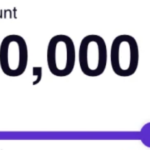
“I put as much money aside as possible to buy my future home,” explains Quentin, a young worker who is turning 30 and wants to become an owner in the next 24 months. “I have had this project for many years because I want to avoid throwing my money down the drain by renting as much as possible,” he continues. And since he started working, he has saved a significant portion of his income each month on his passbook A. “Each time money comes in, I secure my future real estate contribution on this savings book”.
A good student, Quentin understood the importance of regularly setting aside to build up a comfortable envelope and finance a real estate purchase. “In addition, I know that the more my contribution will be important, the more the credit conditions will be advantageous”, adds this future candidate for the purchase. Like him, many young professionals perceive the importance of the personal contribution to buy. But sometimes it is difficult to set aside enough to satisfy the banks. Here are some tips if you are wondering how to save and increase your intake gradually, but surely.
10% minimum contribution
The rule is generally to bring 10% of the purchase price in contribution, an amount difficult to constitute when one starts in the working life. “The banks, however, have a stronger tolerance on the personal contribution for young people who are new to working life: if at 30, it is understandable not to have been able to set aside 15,000 euros in savings, at 40 or 50 years old, it is more problematic not to be able to demonstrate an ability to put money aside “, analyzes Sandrine Allonier, research director of Vousfinancer. And for some, borrowing without contribution or with a lower contribution will be possible. However, they will need to justify some savings and have an irreproachable borrower profile.
In translation, if your current rent is more expensive than your future monthly payment, there will be no charge jump. Conversely, if your future monthly payment is much higher than your rent, the jump charge could block.
Watch out for banking habits
In addition to the real estate contribution, banking habits are indicators of good or bad financial management which influence the obtaining of a loan. And to reassure the banker, the most important thing is not always the size of the contribution, but the profile of the borrower.
By putting in place a real savings strategy and rigorous account management as early as possible, you will build up your future contribution and improve your profile, and therefore your chances of obtaining a mortgage.
Save money
“To save money or show that you are rigorous, you have to start with your budget by asking yourself how much money you spend each month and then look at how to lower your expenses and possibly reduce them when possible. checking his insurance expenses, his unnecessary subscriptions or even checking his bank charges “, adds Jonathan Dhiver.
The site proposes to start by lowering its bank charges. According to his estimates, with average bank charges of 8 euros/month, after 10 years this represents 960 euros. “You have to spend this money differently and/or make it grow by investing”, advises Jonathan Dhiver. And the same logic applies to various streaming subscriptions, insurance, or miscellaneous costs. Also comparing energy providers and telephone or internet subscriptions can help you lower your bills. And therefore to save these saved sums.
To save and limit expenses, “the trick is also to make budgets for everything, by setting a maximum amount per project. This avoids excessive expenses and hazards”, concludes the founder of the site dedicated to savings. And the “zero-based budget” budget technique can help you with that. This management method consists of improving its budget management by rethinking each expense. Concretely, you start from scratch, by sorting the useful expenses of the unnecessary or obsolete expenses. You, therefore, do not start from previous budgets as they are. This method can allow you to reduce your expenses and better manage your cash flow stealthily.









